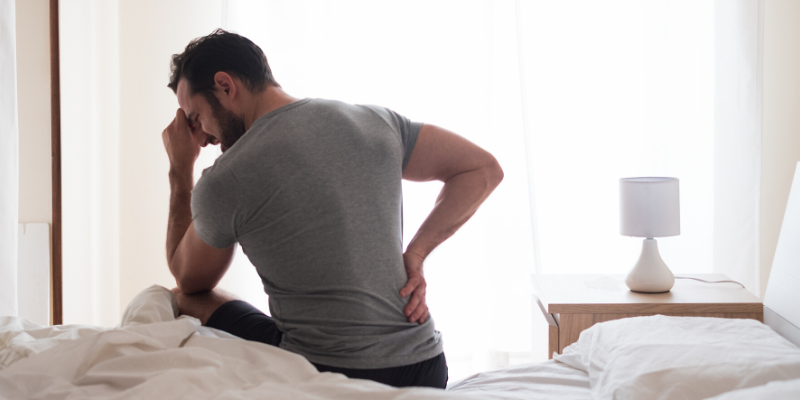Sleeping on your back, side, or stomach?
Your sleeping position is often overlooked, even though we spend a significant portion of our lives asleep. An improper sleeping posture can cause or worsen various aches and pains. Taking the time to assess and adjust your sleeping position can make a real difference. Here are some tips to help you wake up feeling refreshed and pain-free, no matter how you sleep.
Position #1: Sleeping on your back
Placing a pillow under your knees helps prevent excessive arching of the lower back. This reduces tension in the psoas muscle — which connects the legs to the lower back and can increase lumbar curvature (hyperlordosis). Sleeping with the back overly arched can compress the lumbar joints, leading to stiffness or pain upon waking.
Position #2: Sleeping on your side
Bending your knees slightly helps maintain a neutral spine. Placing a pillow between your knees improves comfort and prevents twisting of the spine. If you experience shoulder pain, avoid placing your arm under the pillow, as it can compress the shoulder tendons. Instead, position your arm slightly in front of your body so that your shoulder blade supports most of the weight.
Position #3: Sleeping on your stomach
If you prefer sleeping on your stomach, place a pillow under your abdomen to reduce the arch in your lower back. However, this position is generally not recommended, as it can twist the neck and spine. A good compromise is to sleep halfway between the side and stomach positions, supported by a body pillow for better alignment and comfort.
Frequently asked questions
What type of mattress is best?
You don’t need to sleep on a hard surface, but a moderately firm mattress provides the best spinal support and helps you maintain proper alignment throughout the night. A mattress that’s too soft can increase misalignment and cause pressure points.
How do I choose the right pillow?
Your pillow should match your preferred sleeping position. It should fill the space between your head and the mattress without forcing your neck out of alignment. Try the “apple test”: place an apple on your pillow and remove it. If the pillow immediately regains its shape, it may be too firm, potentially causing small repetitive vibrations in your neck muscles over time.
A tip to help you fall asleep
The 4-7-8 breathing technique works like a natural tranquilizer. Inhale deeply through your nose for four seconds, hold your breath for seven seconds, then exhale slowly through your mouth or nose for eight seconds. Repeat this cycle four times. This simple exercise helps calm the nervous system and promotes relaxation before sleep.
For personalized advice on improving your sleep posture or managing discomfort, consult a physiotherapist. They can assess your needs and recommend adjustments that promote better, pain-free sleep.
Sleep well... and wake up feeling great!






